
Savannakhet: The Historical Heart of Southern Laos
Discover Savannakhet, a charming city where history meets nature. Explore colonial architecture, local traditions, and stunning landscapes in southern Laos.
Savannakhet, the second-largest city in Laos, offers a unique blend of history, culture, and natural beauty. Nestled along the Mekong River, this city is a melting pot of Lao, French, and Vietnamese influences, evident in its old colonial buildings, local cuisine, and vibrant marketplaces. Start your journey in the heart of the city at St. Teresa's Catholic Church, a stunning example of colonial architecture. Wander through the charming streets of the old quarter, where you will find quaint cafes and shops that reflect the city's rich heritage. Don't miss the Savannakhet Provincial Museum, which provides a fascinating insight into the local history and culture. For nature lovers, Savannakhet is a gateway to the stunning Phou Xang He National Protected Area. Trek through lush forests, explore mysterious caves, and encounter diverse wildlife. The region's natural beauty is complemented by its friendly, welcoming locals who are always eager to share their traditions and stories. Savannakhet is also a food lover's paradise. Savor local dishes like Lao sausage and sticky rice, or try French-inspired pastries at one of the many local bakeries. Whether you are exploring ancient temples, enjoying the serene river views, or indulging in the local cuisine, Savannakhet offers an authentic and memorable experience.
Local tips in Savannakhet
- Visit the local night market for delicious street food and handmade crafts.
- Rent a bicycle to explore the city and nearby villages at your own pace.
- Respect local customs by dressing modestly, especially when visiting temples.
- Carry some cash as many small shops and eateries do not accept credit cards.
- Learn a few basic Lao phrases; locals appreciate the effort and it can enhance your experience.
Savannakhet: The Historical Heart of Southern Laos
Savannakhet, the second-largest city in Laos, offers a unique blend of history, culture, and natural beauty. Nestled along the Mekong River, this city is a melting pot of Lao, French, and Vietnamese influences, evident in its old colonial buildings, local cuisine, and vibrant marketplaces. Start your journey in the heart of the city at St. Teresa's Catholic Church, a stunning example of colonial architecture. Wander through the charming streets of the old quarter, where you will find quaint cafes and shops that reflect the city's rich heritage. Don't miss the Savannakhet Provincial Museum, which provides a fascinating insight into the local history and culture. For nature lovers, Savannakhet is a gateway to the stunning Phou Xang He National Protected Area. Trek through lush forests, explore mysterious caves, and encounter diverse wildlife. The region's natural beauty is complemented by its friendly, welcoming locals who are always eager to share their traditions and stories. Savannakhet is also a food lover's paradise. Savor local dishes like Lao sausage and sticky rice, or try French-inspired pastries at one of the many local bakeries. Whether you are exploring ancient temples, enjoying the serene river views, or indulging in the local cuisine, Savannakhet offers an authentic and memorable experience.
When is the best time to go to Savannakhet?
Iconic landmarks you can’t miss
Thai-Laos Friendship Bridge No.2
Discover the stunning Thai-Laos Friendship Bridge No.2, a beautiful connection between two cultures and a breathtaking view of the Mekong River.
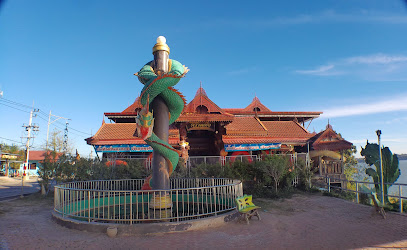
That Ing Hang
Explore the stunning That Ing Hang, a historic Khmer-era stupa in Savannakhet, Laos, offering a blend of spirituality and cultural heritage.
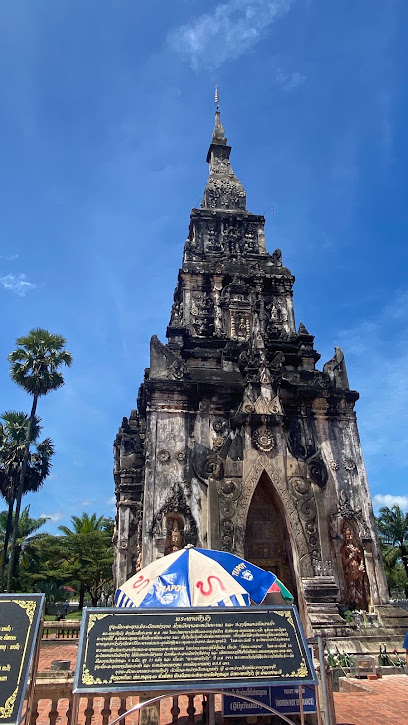
Pilgrim's Kitchen & Inn
Experience the diverse flavors of Savannakhet at Pilgrim's Kitchen & Inn, a cozy spot offering Indian, Mediterranean, and Mexican delights.
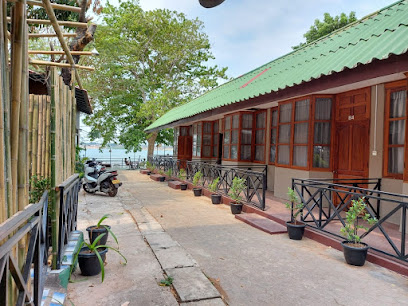
Avalon Residence 1
Discover Savannakhet's charm while enjoying a comfortable stay at Avalon Residence 1, your perfect base for exploration in Laos.

Daosavanh Resort & Spa Hotel
Discover the serene charm of Daosavanh Resort & Spa Hotel in Savannakhet, where relaxation meets Laotian hospitality in a beautiful setting.

Nouhak Phoumsavanh Memorial Park
Discover the tranquil beauty and historical significance of Nouhak Phoumsavanh Memorial Park in Savannakhet, a serene tribute to Laotian heritage.

Savannakhet Airport
Discover the charm of Southern Laos through Savannakhet Airport, your gateway to rich culture, scenic beauty, and vibrant local life.
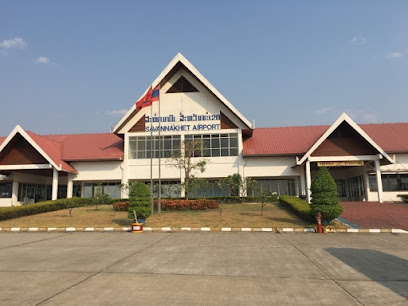
Savannakhet Dinosaur Museum
Explore the Savannakhet Dinosaur Museum, a captivating destination showcasing ancient fossils and rich paleontological history in Laos.

Wat Sainyaphum
Explore the serene Wat Sainyaphum, a stunning Buddhist temple in Savannakhet, Laos, known for its intricate architecture and tranquil atmosphere.
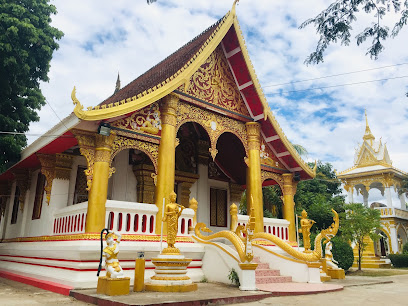
Lao House Shopping Center
Discover unique Laotian crafts and enjoy local coffee at the vibrant Lao House Shopping Center in Savannahkhét.
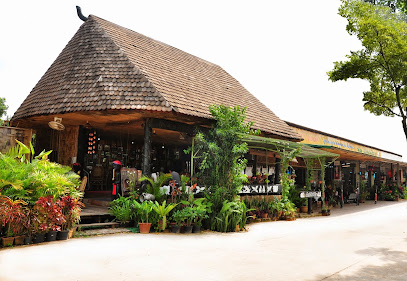
Savannakhet Museum
Explore the fascinating history and culture of Savannakhet at the Savannakhet Museum, a treasure trove of artifacts and stories.
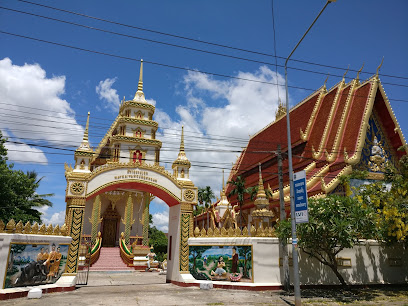
Monkey Forest
Explore the Monkey Forest in Laos, a captivating blend of playful wildlife, lush greenery, and ancient temples, perfect for nature lovers and adventurers.
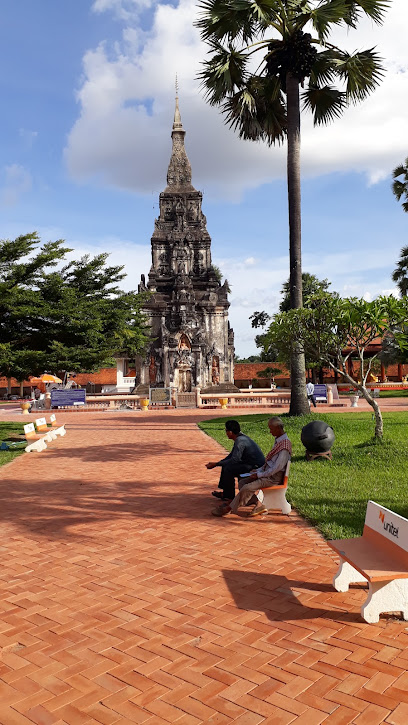
Baguette Maison
Experience the essence of Savannakhet at Baguette Maison, where delightful pastries meet a warm, inviting atmosphere.
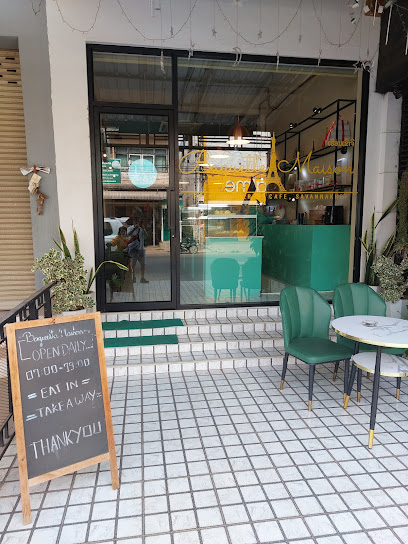
Marvelaos Travel and Tour
Explore Savannakhet's hidden gems with Marvelaos Travel and Tour, offering bike rentals, guided tours, and authentic local experiences in Laos.
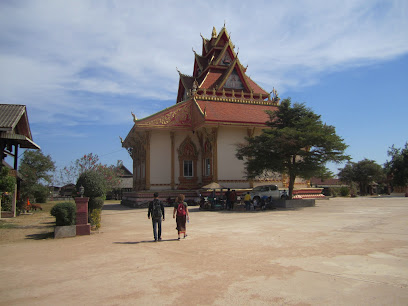
Macchiato Resort Savannakhet
Discover tranquility at Macchiato Resort Savannakhet, where comfort meets local charm in the heart of Laos.

Unmissable attractions to see
Vat Phou
Explore Vat Phou, a UNESCO World Heritage Site, and discover the majestic ruins of the ancient Khmer civilization in the heart of Laos.
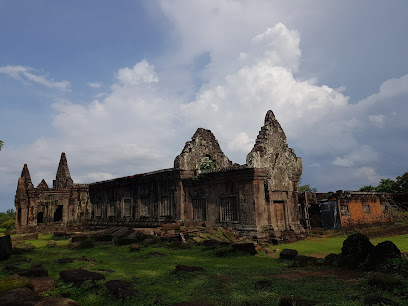
Phu Pha Thoep National Park
Explore the stunning rock formations and diverse wildlife of Phu Pha Thoep National Park in Mukdahan, Thailand - a must-visit for nature lovers.
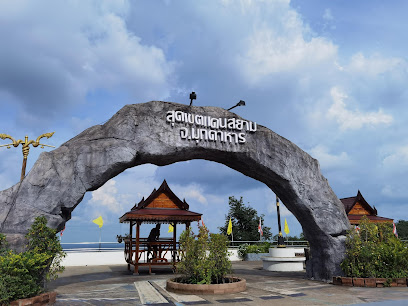
That Ing Hang
Experience the spiritual tranquility and cultural richness at That Ing Hang, a stunning stupa in Savannakhet, Laos, perfect for all travelers.
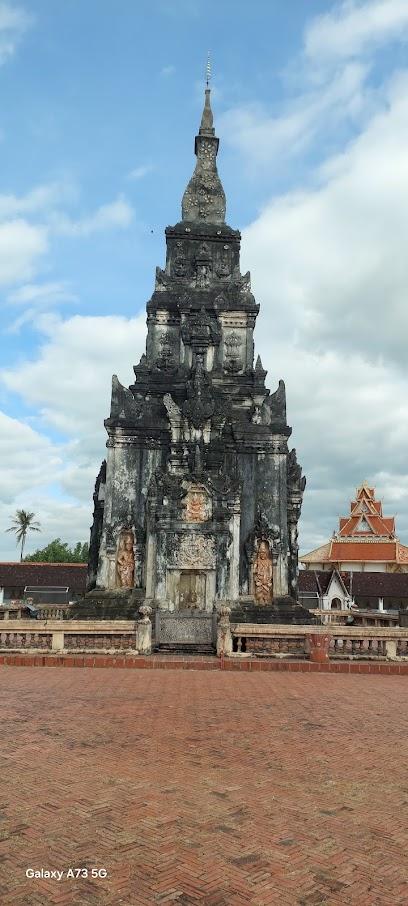
Nouhak Phoumsavanh Memorial Park
Discover the serene beauty and historical significance of Nouhak Phoumsavanh Memorial Park in Savannakhet, a tranquil escape in Laos.
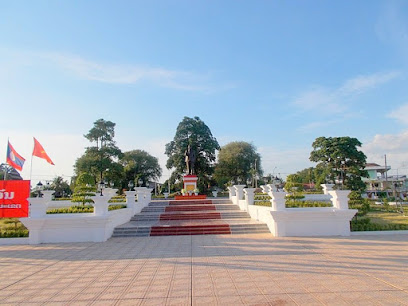
Savannakhet Dinosaur Museum
Discover the prehistoric wonders at Savannakhet Dinosaur Museum, a unique attraction showcasing fascinating dinosaur fossils and interactive exhibits.
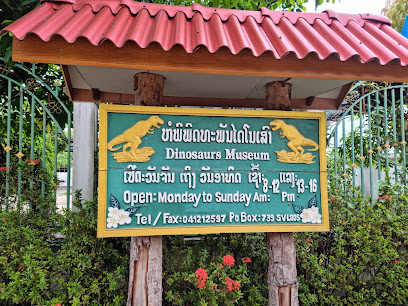
Wat Sainyaphum
Discover the tranquility and cultural richness of Wat Sainyaphum, a stunning Buddhist temple in Savannakhet, Laos, perfect for reflection and exploration.
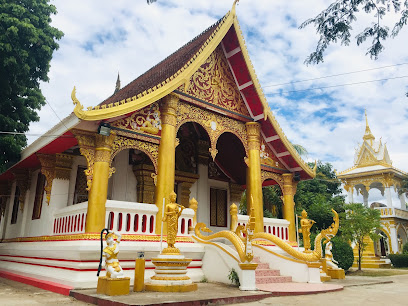
Tham Nong Pa Fa (ถ้ำหนองปลาฝา)
Explore Tham Nong Pa Fa, a stunning natural attraction in Thakhek, Laos, known for its limestone caves, serene lakes, and rich biodiversity.
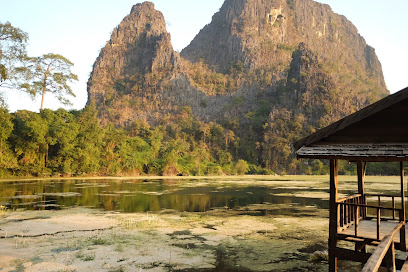
Monkey Forest
Discover the playful charm of Monkey Forest in Laos, where nature and wildlife come together for an unforgettable adventure.
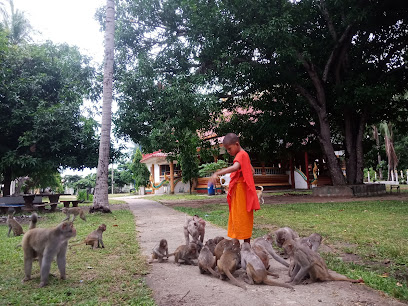
Nong Bungva
Explore the tranquil beauty of Nong Bungva Lake, a hidden paradise in Laos perfect for relaxation, wildlife, and stunning photography.
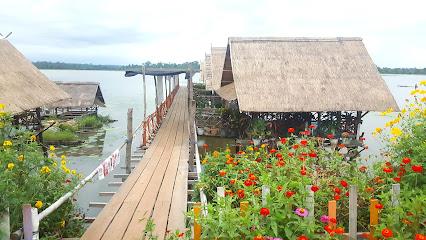
Sompoii Village ບ້ານສົ້ມປ່ອຍໃຫຍ່
Explore the serene beauty and rich culture of Sompoii Village in Savannakhet, Laos, a perfect retreat for travelers seeking authenticity.
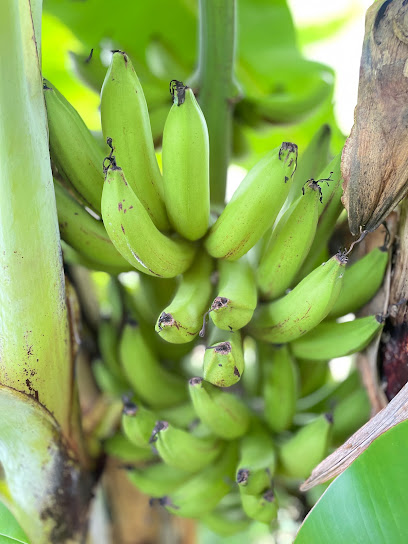
Essential places to dine
Savan Resorts
Experience unparalleled luxury and diverse entertainment at Savan Resorts in Savannakhet, where every moment is crafted for enjoyment.

Lin's Cafe
Experience delightful breakfasts and cozy ambiance at Lin's Cafe in Savannakhet - where every meal is a celebration of local flavors.
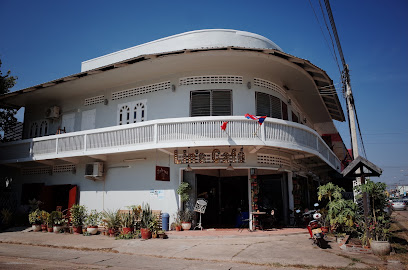
Pilgrim's Kitchen & Inn
Discover diverse flavors and cozy accommodations at Pilgrim's Kitchen & Inn in Savannakhet – where culinary delights meet comfort.
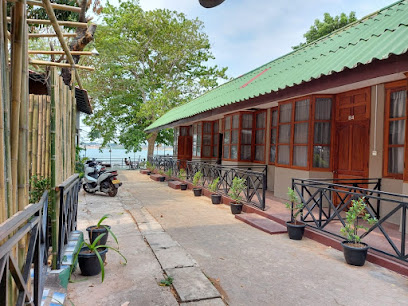
Home Beer
Discover authentic Laotian cuisine at Home Beer in Savannakhet—where local flavors meet affordability.
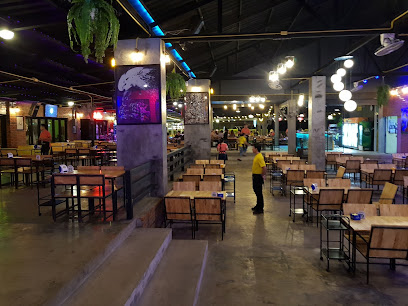
Lao View Riverfront Restaurant
Experience authentic Laotian cuisine with breathtaking views at Lao View Riverfront Restaurant in Savannakhet.
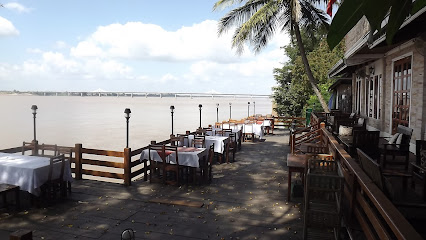
Lao View Restaurant
Experience the rich flavors of traditional Lao cuisine at Lao View Restaurant in Savannakhet – a culinary delight for all food lovers.
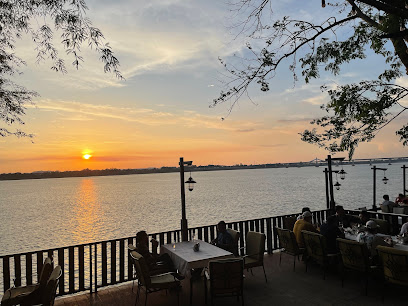
Cafe Chez Boune Restaurant
Experience the vibrant flavors of Savannakhet at Cafe Chez Boune – where tradition meets modern culinary excellence.
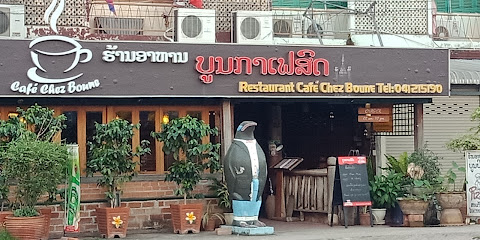
Dolly's Cafe
Discover Dolly's Cafe in Savannakhet: A perfect blend of Western cuisine, local charm, and motorcycle rentals for your adventure.
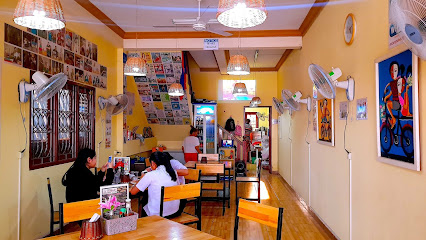
ສວນອາຫານ ໂດມຄຳ
Experience authentic Lao cuisine at ສວນເແານ ໂໍམ ກར in Savannakhet - where tradition meets flavor.
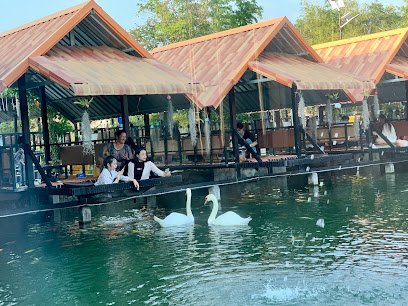
Miga Restaurant
Discover authentic Korean cuisine at Miga Restaurant in Savannakhet - where every dish tells a story of tradition and flavor.
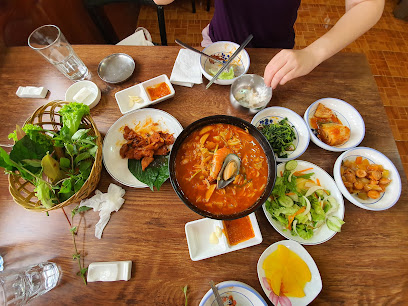
Sabaidee Restaurant
Experience authentic Lao cuisine at Sabaidee Restaurant in Savannakhet – where every meal tells a story.
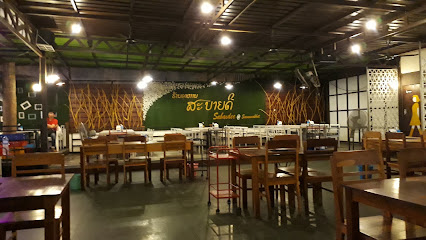
Savan Barbeque
Discover Savannakhet's culinary delight with delicious pizzas, juicy burgers, and authentic Thai flavors at Savan Barbeque.
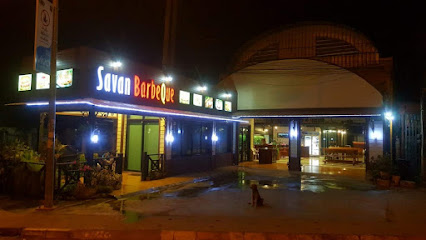
Noi KhaoKhaMou Savannakhet ນ່ອຍ ເຂົ້າຂາໝູ ສະຫວັນນະເຂດ
Experience authentic Thai flavors at Noi KhaoKhaMou in Savannakhet - a culinary gem offering delicious dishes in a warm atmosphere.
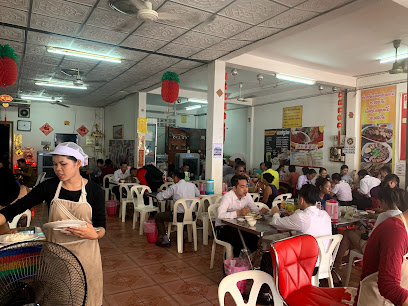
ຊູໂມ້ ຊາບູ Sumo Shabu
Experience the vibrant flavors of shabu-shabu at Sumo Shabu in Savannakhet - a must-visit culinary gem.
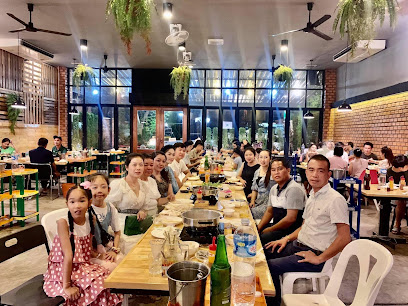
ພອນນະພາໂຊກໄຊ
Discover the heart of Lao flavors at ພອນນະພາໂຊກໄཌྷ - A culinary haven in Savannakhet showcasing authentic dishes.
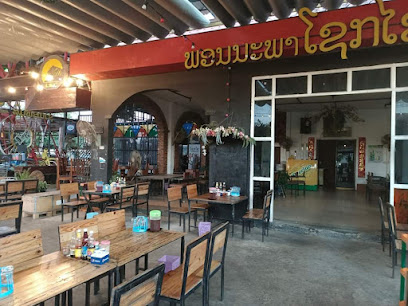
Markets, malls and hidden boutiques
Lao House Shopping Center
Explore unique Laotian souvenirs and savor delicious coffee at Lao House Shopping Center in Savannahkhét.
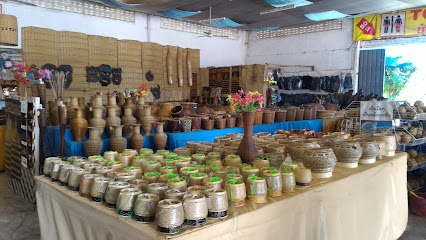
Papillon
Explore Papillon in Savannakhet for unique gifts showcasing Lao artistry and culture, ensuring memorable souvenirs from your travels.
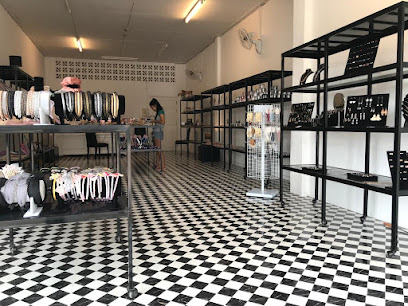
Target Store
Explore the vibrant Target Store in Savannakhet, where local flavors meet convenience for every traveler’s needs.
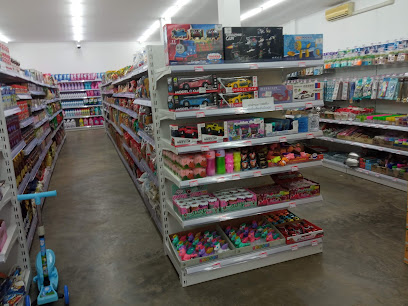
Mam Savanh shop
Explore authentic local flavors and fresh produce at Mam Savanh Shop in Savannakhet, a vibrant grocery store reflecting Lao culinary traditions.
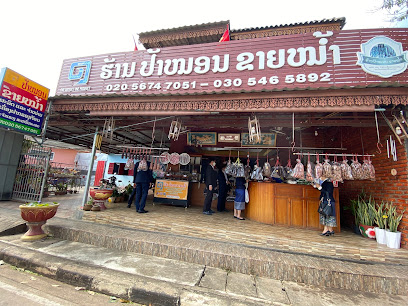
Sabadee Mart
Discover local flavors and essentials at Sabadee Mart, a convenient store in Savannakhet, perfect for travelers seeking a taste of Laos.
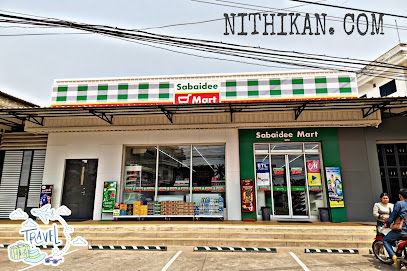
YOSUN GOOD LAOS
Explore the rich culture of Laos at YOSUN GOOD LAOS, your go-to gift shop for unique handicrafts and memorable souvenirs in Savannakhet.

Odop Savannakhet
Discover unique Laotian crafts at Odop Savannakhet, a vibrant gift shop showcasing the rich culture and artistry of Laos.
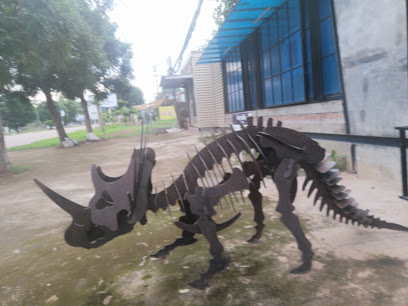
Duty Free Shopping
Discover Savannakhet's duty-free shopping paradise, offering a wide range of international products at unbeatable prices.
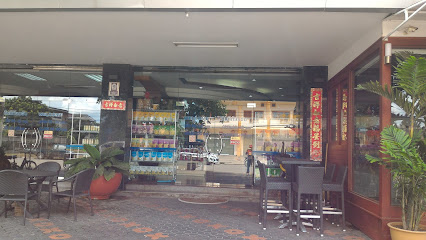
ໂຮງງານ ເຈເຫັດ ບຮອກນາໂນ
Discover unique home goods and local craftsmanship in Savannakhet's charming store, perfect for souvenirs and gifts.

Laimay Shop (Silk)
Explore the rich heritage of Laos through exquisite silk garments and accessories at Laimay Shop, Savannakhet's premier clothing store.

ບໍລິສັດ ຄຳປະເສີດ ການຄ້າຈຳກັດ
Discover authentic Lao home goods and unique crafts in Savannakhet, showcasing the rich artistry of local artisans.
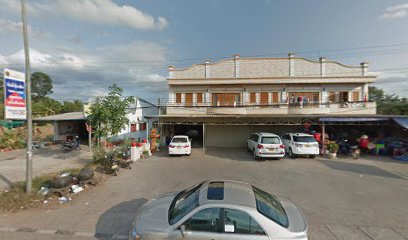
IT city
Explore Savannakhet's top electronics store for the latest tech gadgets and essential devices while immersing yourself in the local culture.
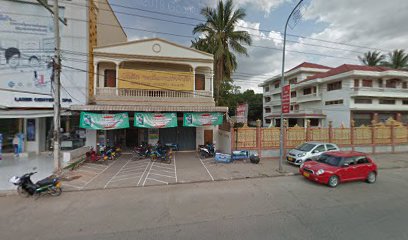
Reuangxay Auto
Explore the vibrant offerings of Reuangxay Auto in Savannakhet, where local culture meets everyday shopping needs.
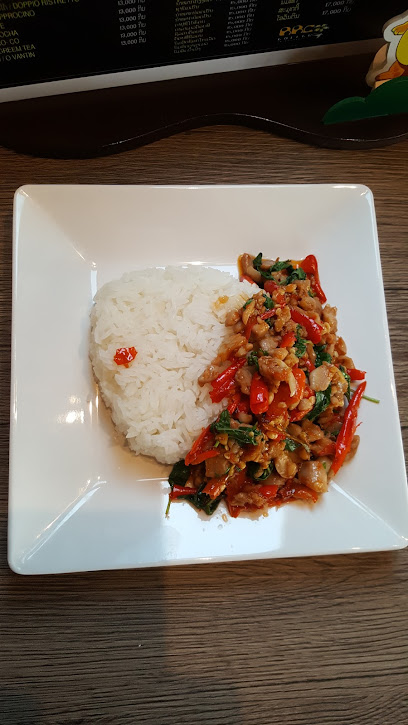
The Anything Store - ຮ້ານຂາຍເຄື່ອງສາລະພັດ
Discover unique local goods and crafts at The Anything Store in Savannakhet, a must-visit for every tourist looking for authentic souvenirs.
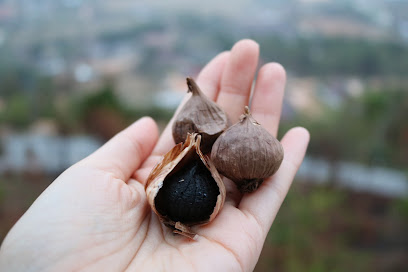
Alex shop
Explore Alex Shop in Savannakhet for a unique shopping experience featuring local fashion and souvenirs that capture the essence of Laos.
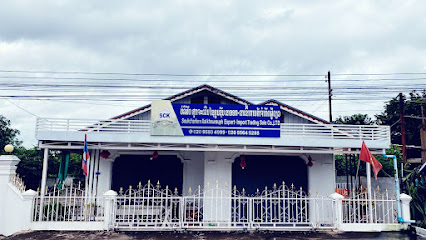
Essential bars & hidden hideouts
The River Cafe & Bar
Experience the tranquility of riverside dining at The River Cafe & Bar in Savannakhet, where refreshing drinks and stunning views await.
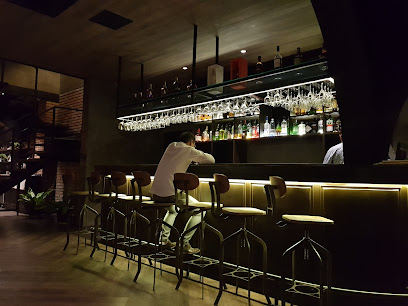
The Night Bar and Bistro
Discover the vibrant nightlife at The Night Bar and Bistro in Savannakhet, where delicious food and lively entertainment await.
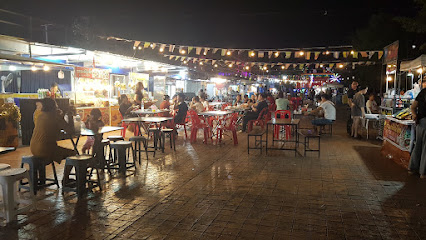
Waiwan savannakhet
Discover the lively atmosphere of Waiwan Savannakhet, a premier bar in Laos offering great drinks and a vibrant nightlife experience.
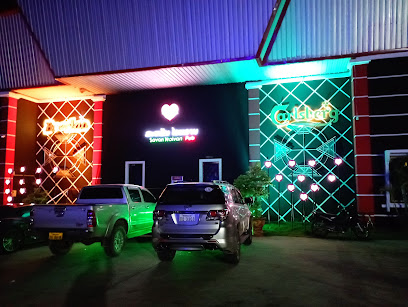
BangBar
Discover the lively nightlife and delicious drinks at BangBar, Savannakhet's premier bar for locals and tourists alike.
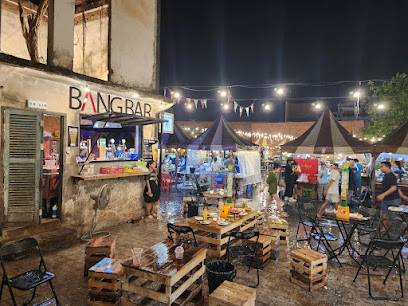
Heineken Savannakhet
Experience the vibrant atmosphere of Heineken Savannakhet, where local culture meets refreshing brews in a quintessential brewpub setting.
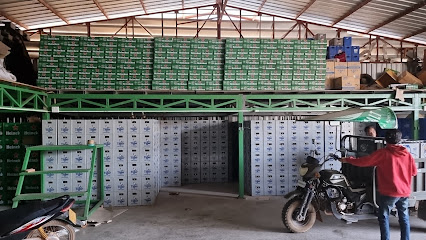
Rasha Bistro & coffee
Experience the vibrant flavors of Savannakhet at Rasha Bistro & Coffee, where local cuisine meets a cozy bar atmosphere.
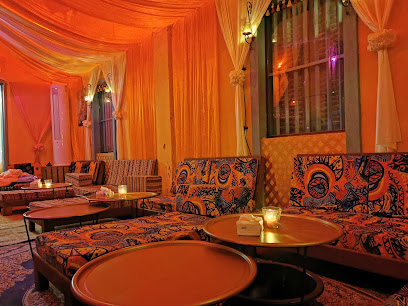
Galaxy Bar ກາແລັກຊີ້ ບາຣ໌
Discover the vibrant nightlife at Galaxy Bar in Savannakhet, offering delicious cocktails and a lively atmosphere for all visitors.
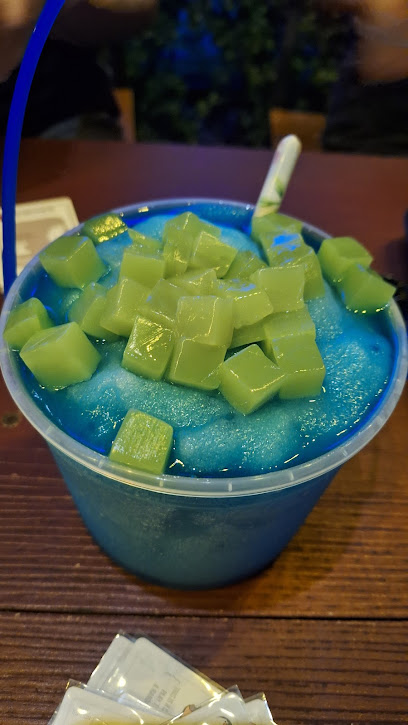
Nanglin Bar
Experience the lively atmosphere of Nanglin Bar in Savannakhet, where local flavors and vibrant nightlife come together for an unforgettable evening.
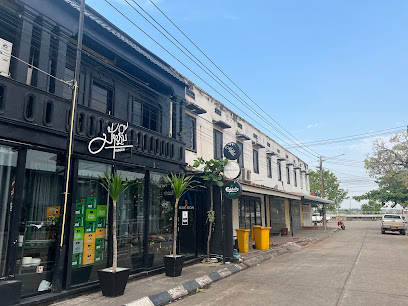
The social club
Experience the vibrant nightlife at The Social Club in Savannakhet, where locals and travelers unite for unforgettable evenings.
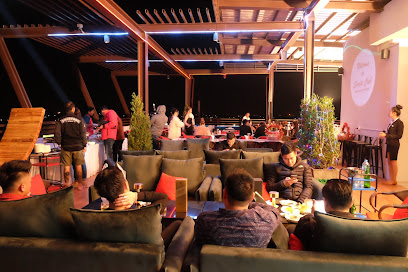
เป็น ตา ฮัก (Pen Ta Hug)
Discover the lively Pen Ta Hug bar in Savannakhet, where local culture meets vibrant nightlife with delicious drinks and friendly faces.

The Imperial Bar Savannakhet
Experience the vibrant nightlife at The Imperial Bar Savannakhet, where expertly crafted cocktails meet a lively atmosphere.
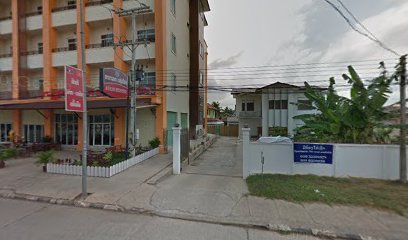
Classy Bar
Discover the elegance of Savannakhet at Classy Bar, where expertly crafted cocktails meet a cozy atmosphere.

ຮາຊາ
Discover the lively nightlife of Savannakhet at ຮາຊາ, a popular pub offering a vibrant atmosphere and a diverse drink selection.
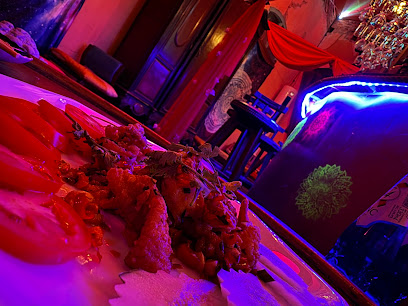
ຮ້ານ ພົບຮັກ ນະຄອນໄກສອນພົບວິຫານ
Experience the vibrant atmosphere and local flavors at ຮ້ານ ພົບຮັກ ນະຄອນໄກສອນພົບວິຫານ in Savannakhet, where culture meets relaxation.
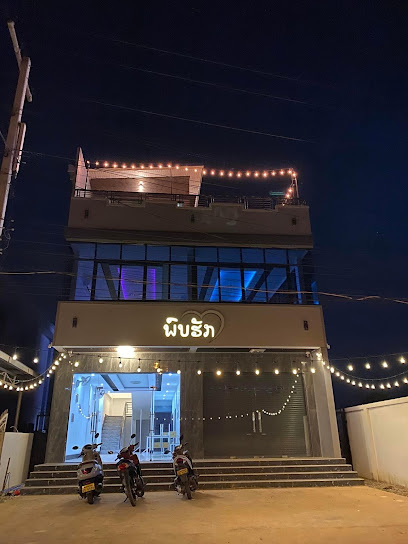
Le Panorama
Discover the serene charm of Le Panorama in Savannakhet - a perfect bar for relaxation with stunning views.
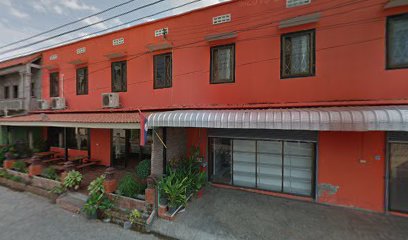
Local Phrases
-
- Helloສະບາຍດີ
[sa baai di] - Goodbyeຂ້ອຍເຈົ້າ
[khoy jao] - Yesຂໍ
[kho] - Noບໍ່
[bo] - Please/You're welcomeກະລຸນາ
[ka lao na] - Thank youຂອບໃຈ
[khob chai] - Excuse me/Sorryຂໍຂອບ
[kho khob] - How are you?ໂດຍກິດຈະກ່າວ?
[dai ki ja kaw?] - Fine. And you?ເປັນຄົນດາ. ພວກເຈົ້າ?
[pen khon da. pwak jao?] - Do you speak English?ທ່ານເວົ້າພາສາອັງກິດເປັນບໍ?
[than wa pha sa ang ki pen bo?] - I don't understandຂ້ອຍບໍ່ເຂົ້າ
[khoy bo khao]
- Helloສະບາຍດີ
-
- I'd like to see the menu, pleaseຂ້ອຍຢາກເບີຍການ, ກະລຸນາ
[khoy yak beu yan kan, ka lao na] - I don't eat meatຂ້ອຍບໍ່ກິນອາຫານ
[khoy bo kin ahaan] - Cheers!ສະບາຍດີ
[sa baai di] - I would like to pay, pleaseຂ້ອຍຢາກຈ່າຍ, ກະລຸນາ
[khoy yak jai, ka lao na]
- I'd like to see the menu, pleaseຂ້ອຍຢາກເບີຍການ, ກະລຸນາ
-
- Help!ຊ່າງຂ້ອຍ!
[sang khoy!] - Go away!ໄລຍະຂ້ອຍ!
[lai khoy!] - Call the Police!ໂທສະຖານຫ້າມເຮັດ!
[thot sa than ham het!] - Call a doctor!ໂທສທ່ານຜູ້ຮັບພາສາ!
[thot than pu hap pha sa] - I'm lostຂ້ອຍຫາຍທີ່
[khoy ny thi] - I'm illຂ້ອຍຈິ່ນອາການ
[khoy jin a kan]
- Help!ຊ່າງຂ້ອຍ!
-
- I'd like to buy...ຂ້ອຍຢາກຊື້...
[khoy yak su...] - I'm just lookingຂ້ອຍເບິ່ງຢາກສະຖານ
[khoy beng yak sa than] - How much is it?ເກີນຈັກ?
[keng jak?] - That's too expensiveມັນຂໍ້ມູນຫຼາຍເກີນ
[man khon mun lai keng] - Can you lower the price?ທ່ານໄດ້ຈໍາອັບຄ່າໄດ້ບໍ?
[than dai jom ap ka dai bo?]
- I'd like to buy...ຂ້ອຍຢາກຊື້...
-
- What time is it?ເວລາແລງແມງຢູ່ເມືອງເລືອດ?
[welaa leng maeng yu meuang leuat?] - It's one o'clockສິບມື້
[sip meu] - Half past (10)ລາວບ່າວ
[la wa bai] - Morningກາງວັນ
[kang wan] - Afternoonປາກາວວັນ
[pa ka wan] - Eveningກາງຕາງ
[kang tang] - Yesterdayແມ່ນມື້
[maen meu] - Todayມື້ນີ້
[meu ni] - Tomorrowມື້ອື່ນ
[meu un] - 1ໜີ້
[neu] - 2ສອງ
[song] - 3ສາມ
[sam] - 4ສີ່
[si] - 5ຫ້າ
[ha] - 6ຫົກ
[hok] - 7ໂມງ
[mong] - 8ແມັດ
[maet] - 9ເກົ້າ
[kao] - 10ສິບ
[sip]
- What time is it?ເວລາແລງແມງຢູ່ເມືອງເລືອດ?
-
- Where's a/the...?ຢູ່ຫຼາຍລະບາບ...?
[yu lai sa pak...?] - What's the address?ທີ່ຢູ່ລະບາບແມ່ນເຈົ້າ?
[ti yu sa pak maen jao?] - Can you show me (on the map)?ທ່ານສະແດງຂ້ອຍໃນແຜນທີ່ໄດ້ບໍ?
[than sa dang khoy nai phaen thi dai bo?] - When's the next (bus)?ມື້ອື່ນວິນາຄານ...
[meu un win nak an kan...] - A ticket (to ....)ຟ້າກີດ (ໄປ...)
[fa kit (pai...)]
- Where's a/the...?ຢູ່ຫຼາຍລະບາບ...?
History of Savannakhet
-
Savannakhet, known in the Lao language as 'Champasak Nakhon', has roots that trace back to ancient civilizations. Archaeological findings reveal that the region was inhabited as far back as the Neolithic era. The area's strategic location along the Mekong River fostered early trade and cultural exchanges.
-
From the 14th to the 18th century, Savannakhet was part of the Lan Xang Kingdom, one of the largest and most powerful kingdoms in Southeast Asia. The kingdom was known for its wealth, derived from trade and agriculture, and its vibrant culture. During this period, Buddhism flourished, and many temples and religious monuments were constructed.
-
In the late 19th century, Savannakhet came under French colonial rule as part of French Indochina. The French influence is still visible today in the town's architecture, especially in the colonial buildings that line the streets. This era brought infrastructure development, including the construction of roads and schools, which significantly impacted the local economy and society.
-
During World War II, Savannakhet, like much of Southeast Asia, was occupied by Japanese forces. The occupation disrupted daily life and led to significant hardships for the local population. Despite the challenges, the period also fostered a sense of national identity and resistance among the Lao people.
-
Following World War II, Laos gained independence from France in 1953. However, the subsequent years were marked by political instability and civil war. Savannakhet became a strategic location during the Laotian Civil War (1959-1975), with various factions vying for control. The war left deep scars on the town and its inhabitants.
-
After the end of the Laotian Civil War and the establishment of the Lao People's Democratic Republic in 1975, Savannakhet began a slow process of reconstruction. Efforts were made to rebuild infrastructure, revive the local economy, and restore cultural heritage sites. This period saw a renewed focus on education and health services.
-
Today, Savannakhet is known for its rich cultural heritage and historical significance. The town is home to several important religious sites, including the That Ing Hang Stupa, which is one of the most revered Buddhist stupas in Laos. Modern development has brought new opportunities and challenges, as the town strives to balance growth with the preservation of its unique cultural identity.
Savannakhet Essentials
-
Savannakhet is accessible via multiple routes. The nearest international airport is Savannakhet Airport (ZVK), which has regular flights from Vientiane, the capital of Laos, and Bangkok, Thailand. Alternatively, you can arrive by bus from major cities in Laos and neighboring countries. The Thai-Laos Friendship Bridge connects Savannakhet with Mukdahan in Thailand, making it convenient for travelers coming from Thailand.
-
Savannakhet offers several transportation options. Tuk-tuks and taxis are widely available and are a convenient way to get around the city. Bicycles and motorbikes can be rented for exploring at your own pace. Public buses operate within the city and to nearby towns. Walking is also a pleasant way to explore the city center and its attractions.
-
The official currency in Laos is the Lao Kip (LAK). While some hotels, restaurants, and shops accept major credit cards, it is advisable to carry cash, particularly for smaller establishments and local markets. ATMs are available in Savannakhet, but it is wise to ensure you have enough cash before heading to more remote areas.
-
Savannakhet is generally considered safe for tourists. However, it is important to take standard precautions. Avoid walking alone at night in unfamiliar areas and be cautious with your belongings in crowded places. While there are no specific high-crime areas targeting tourists, staying vigilant and aware of your surroundings is always recommended.
-
In case of emergency, dial 1191 for immediate assistance in Savannakhet. The city has medical facilities and a local police station to assist with emergencies. It is recommended to have travel insurance that covers medical emergencies. Pharmacies are available for purchasing over-the-counter medications for minor health issues.
-
Fashion: Do dress modestly, especially when visiting religious sites. Avoid wearing revealing clothing. Religion: Do respect local customs and traditions, such as removing your shoes before entering temples. Public Transport: Do be respectful and give up your seat to elderly passengers. Don’t eat or drink on public transport. Greetings: Do greet people with a friendly 'Sabaidee' and a slight bow. Eating & Drinking: Do try local dishes and accept food offerings graciously. Don’t refuse hospitality, as it is considered impolite.
-
To experience Savannakhet like a local, visit the central market where you can buy fresh produce and traditional Lao goods. Engage with locals, who are often friendly and willing to share stories about the city's history and culture. Don't miss the chance to visit the That Ing Hang Stupa, a significant religious site. For a unique experience, take a stroll along the Mekong River and enjoy the scenic views, especially during sunset.
Trending Landmark in Savannakhet
-
Thai-Laos Friendship Bridge No.2
-
That Ing Hang
-
Pilgrim's Kitchen & Inn
-
Avalon Residence 1
-
Daosavanh Resort & Spa Hotel
-
Nouhak Phoumsavanh Memorial Park
-
Savannakhet Airport
-
Savannakhet Dinosaur Museum
-
Wat Sainyaphum
-
Lao House Shopping Center
-
Savannakhet Museum
-
Monkey Forest
-
Baguette Maison
-
Marvelaos Travel and Tour
-
Macchiato Resort Savannakhet
Nearby Cities to Savannakhet
-
Things To Do in Thakhek
-
Things To Do in Ubon Ratchathani
-
Things To Do in Pakse
-
Things To Do in Champasak
-
Things To Do in Udon Thani
-
Things To Do in Vientiane
-
Things To Do in Hue
-
Things To Do in Nakhon Ratchasima
-
Things To Do in Loei
-
Things To Do in Vang Vieng
-
Things To Do in Phonsavan
-
Things To Do in Siem Reap
-
Things To Do in Da Nang
-
Things To Do in Xieng Khouang
-
Things To Do in Hoi An








